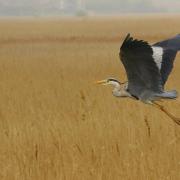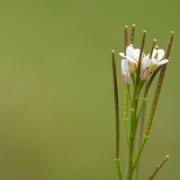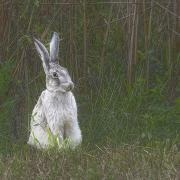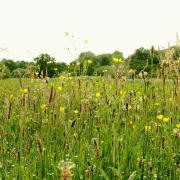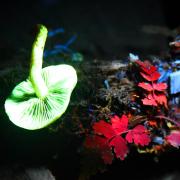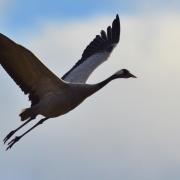Norfolk Wildlife Trust’s Robert Morgan shares images and tips to help your identify the creepy crawlies living in your outside spaces

Even the tiniest gardens can produce surprises. If you take a little more notice while strolling around your ‘plot,’ perhaps even with a glass of wine in hand, it may reveal insects you have never seen before. Many people can recognise ladybirds, cabbage white butterflies and bumblebees, but with a little more effort and exploration it is amazing the insect life that can be uncovered in most gardens. There is as much wonderment in the small and commonplace, as in the mighty and rare, so here are a few to look out for this summer.
Wasp beetle
Clytus arietis

Does what it says on the tin: a long thin beetle that is striped black and yellow like a wasp. It even mimics the jerky flight of the wasp, but it’s perfectly harmless.
Devil’s coach horse
Staphylinus olens

Appropriately named, at about three centimetres long this beetle punches well above its weight. Pitch black and covered in tiny hairs it spends the day under stones and debris, emerging only after dark. When threatened it cocks its tail like a scorpion, emits a foul-smelling substance and powerful jaws deliver a painful bite! But this voracious predator is the gardener’s friend eating many pest species, including slugs.
Orange-tip butterfly
Anthocharis cardamines

The male orange-tip butterfly is always a treat when it comes tripping through the garden. This white butterfly with distinctive orange marks on the forewings (although the female lacks these) has become increasingly common in recent years, and with an ever expanding range is a regular garden visitor even in large towns.
Whirligig beetle
Gyrinus natator

If you have a pond you may see these small black beetles whirling round and round on the surface, sometimes in large groups. They can be quite mesmerising but if disturbed they will dive as a group, vanishing almost immediately. Each of its eyes is divided into two parts, the top half is looking across the surface, the bottom half into the water.
Great silver water beetle
Hydrophilus piceus

While gazing into your garden pond do keep an eye out for this giant beetle coming up for air. The great silver beetle is a vegetarian, although its huge mud dwelling larva has an appetite for aquatic snails.
Humming-bird hawkmoth
Macroglossum stellatarum

This is a smashing insect to find in the garden: a large day flying moth that migrates here from across the Channel. It is unmistakable as it hovers from flower to flower, probing with its long tongue.
Comma butterfly
Polygonia c-album

Mottled brown, beige and black this butterfly is unique in having a ragged outline to its wings and a small ‘comma’ on its underwing. It hibernates and has several broods, so can be found all year round in most of our gardens. This was not always the case; after suffering massive declines it almost became extinct in the UK, so one to treasure when you find it flitting over your flowerbed.
Maybug
Melonontha melonotha

Just as likely to be seen on a warm June evening, this large brown beetle with comb like antennae is often seen flying around the tops of trees. It goes by many alias: cockchafer, doodlebug, Billy witch and in Norfolk the Kitty witch.
Marmalade hoverfly
Episyrphus balteatus

A ubiquitous little fly that looks like a small translucent wasp, often found nectaring on umbellifer flowers, such as hogweed and cow parsley. Another of the gardener’s friends as its larva feed on aphids.
Emperor dragonfly
Anax imperator

Even if your garden does not have a pond, you may well find this imperious beast patrolling around. The emperor dragonfly is a pioneer, always on the look-out for new areas to colonise, so it may travel quite some distance from its home pond. Males are particularly striking, with azure blue and apple green colouring. Being an impressively large predator, this guy is the boss.
Ruby-tailed wasp
Chrysis ignita
In sunlight this beauty glitters in shimmering metallic green and blue. It is a stingless wasp that lives a harmless solitary life, unless you are a mason bee: it lays its eggs in their nest holes and after hatching it eats the bee’s larvae.
Garden tiger moth
Arctia caja
I’m afraid this could be a last chance to see this garden tiger moth. It was once widespread and common, but the population has declined by a whopping 90%. However, you may be lucky enough to find one and if you do, it’s stunning, with mottled chocolate and cream forewings and red, blue spotted hindwings. Its caterpillar is the aptly named woolly bear. Like most moths they are attracted to bright lights, so check around outside lights or even place a white sheet on the lawn with a bright lamp on top. It’s surprising the number and variety of moths you can attract, especially on a warm summer’s night





